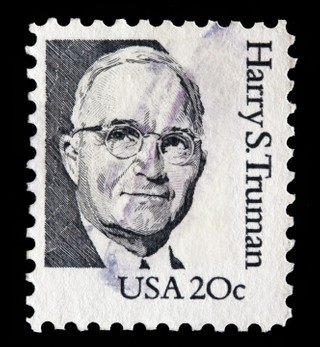
Users and Choosers — A Guide to ANSI Terms
August 31, 2012

As former President Harry Truman once said, “The buck stops here.” Naturally, Truman said that in regards to his responsibilities as President of the United States. But, when fall protection standards are involved, the proverbial buck stops with the American National Standards Institute and the American Society of Safety Professionals. In many ways, they are like the Presidents of fall protection. Each definition they offer briefly explains the expected roles and knowledge requirements of the people in each position.
All of the following terms are found under the ANSI/ASSE Z359.0-2007 definitions section of the Fall Protection Code handbook. Many of these titles are similar to one another, and yet, there are distinct differences in regards to who can make decisions about safety measures. The terms Authorized Person and Competent Person are reserved for people with less education and more hands-on experience with fall protection systems. Meanwhile, the terms Qualified Person and Program Administrator indicate a greater amount of fall protection education and direct work.
The formal definitions of each term, as outlined by ANSI, are as follows:
Authorized Person – 2.10-A person assigned by the employer to perform duties at a location where the person will be exposed to a fall hazard.
Competent Person – 2.27-An individual designated by the employer to be responsible for the immediate supervision, implementation, and monitoring of the employer’s managed fall protection program who, through training and knowledge, is capable of identifying, evaluating, and addressing existing and potential fall hazards, and who has the employer’s authority to take prompt, corrective action with regards to such hazards.
Program Administrator – 2.107-A person authorized by their employer to be responsible for managing the employer’s fall protection program.
Qualified Person – 2.109-A person with a recognized degree or professional certificate and with extensive knowledge, training, and experience in the fall protection and rescue field who is capable of designing, analyzing, evaluating, and specifying fall protection and rescue systems to the extent required by this standard.
Inversely, OSHA only gives a definition for a competent person. According to OSHA-29 CFR 1926.32(f) a “Competent Person” is defined as, “One who is capable of identifying existing and predictable hazards in the surroundings or working conditions which are unsanitary, hazardous, or dangerous to employees and who has authorization to take prompt corrective measures to eliminate them.”
These title explanations can be truncated significantly. Since legal documents need to be all-encompassing, the definitions are laden with many words that make these positions seem more intimidating than they actually are. When you cut through the rhetoric, ANSI is simply saying the following:
An authorized person is someone who needs to use fall protection in the workplace.
A competent person is someone who performs on-site monitoring of fall hazard zones.
A program administrator ensures that the appropriate fall protection system is in place and is being used.
And, a qualified person is someone who has a degree related to fall safety; thus, they create the actual fall protection systems.
By having a more thorough understanding of the roles in each position, industrial companies can better manage their workers. Better management brings a more efficiently run business, which increases profits, and ultimately makes a greater contribution to American society. Education is a critical, preliminary component to the process of running a business. Learning the lingo is the first leap toward industrial longevity.
Stay safe and take care!
Hannah Addison
Rigid Lifelines
Categories
Share this post
Let us help you
Contact us today to find the perfect product fit for your job
